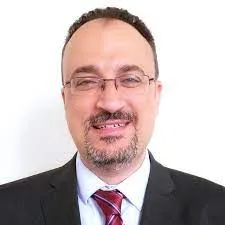Description
Percutaneous dilatational tracheostomy (PDT) is a commonly performed procedure in critically sick patients. It can be safely performed bedside by intensivists. This has resulted in decline in the use of surgical tracheostomy in intensive care unit (ICU) except in a few selected cases. Most common indication of tracheostomy in ICU is needed for prolonged ventilation. About 10% of patients requiring at least 3 days of mechanical ventilator support get tracheostomized during ICU stay. The ideal timing of PDT remains undecided at present. Contraindications and complications become fewer with increase in experience. Various methods of performing PDT have been discovered in the last two decades. Preoperative work up, patient selection and post tracheostomy care form key components of a successful PDT. Bronchoscopy and ultrasound have been found to be useful procedural adjuncts, especially in presence of unfavorable anatomy.
Summary Listen
- Percutaneous tracheostomy (perk trachi) is a surgical airway created by percutaneous serial dilation, maintained by a tracheostomy tube. It is considered when a patient requires mechanical ventilation for more than 7-10 days, aiming to reduce complications like tracheomalacia. Other indications include facilitating sedation reduction, prolonged ventilator weaning, and airway protection in patients with muscle disease or fluctuating consciousness.
- Absolute contraindications include cervical instability, uncontrolled coagulopathy, and infection at the tracheostomy site. Relative contraindications are difficult anatomy and severe respiratory failure. Difficult anatomy can be caused by scar tissue, neck radiotherapy, vessels overlying the trachea, deviated trachea, obesity, a fixed neck, burns, and difficulty identifying surface landmarks.
- Percutaneous tracheostomy may offer advantages over surgical tracheostomy, including fewer wound infections, less scarring, smaller holes, lower mortality, fewer serious adverse events, and less major bleeding, according to a Cochrane review. The procedure ideally involves a team of four: an airway manipulator, a bronchoscopist, the operator, and an assistant. A stable tracheostomy team can enhance success rates and reduce complications.
- Pre-procedure checks are essential, including patient identification, consent, feeding and anti-aggregation cessation, and monitoring, particularly CO2 monitoring. The safest insertion point is usually between tracheal rings 2 and 3, sometimes between rings 1 and 2. Ultrasound can assess the suitability of the procedure by identifying vessels or thyroid tissue overlying the trachea.
- The procedure involves several techniques, including serial dilatation, single tapered dilatation (Rhino horn), guide wire and forceps, and balloon dilatation. After skin preparation and local anesthetic injection, a needle and cannula are inserted into the trachea, confirmed by bronchoscopy. A guide wire is then inserted, followed by serial dilators or a rhino horn dilator.
- Bronchoscopy is crucial to confirm the correct placement of each step. The trachea tube is then inserted over a stylet, secured, and stitched. Post-procedure care includes checklist confirmation, ventilation and sedation instructions, and a chest X-ray to check tube position, pneumothorax, and aspiration.
- Complications include airway loss, pneumothorax, subcutaneous emphysema, tracheal injury, neck structure injury, bleeding, infection, and, rarely, death. Later complications involve voice change, tracheal stenosis, tracheomalacia, dysphagia, and scarring.
- Case studies illustrated the importance of considering various factors, including the patient's overall stability, respiratory function, neurological status, anatomical considerations, and ethical considerations when deciding whether to perform percutaneous tracheostomy. The decision should be made in conjunction with the team, family, and ethical guidance when available.
Sample Certificate
About the Speakers

Dr. Hazem Lashin
FRCP FFICM FHEA PhD Consultant in Critical Care Medicine Faculty Tutor in Intensive Care Medicine Clinical Lead for High Dependency Unit Barts Heart Centre, St Bartholomew’s Hospital West Smithfield, London, EC1A 7BE
Financial Disclosure
Comments
Comments
You must be logged in to leave a comment.